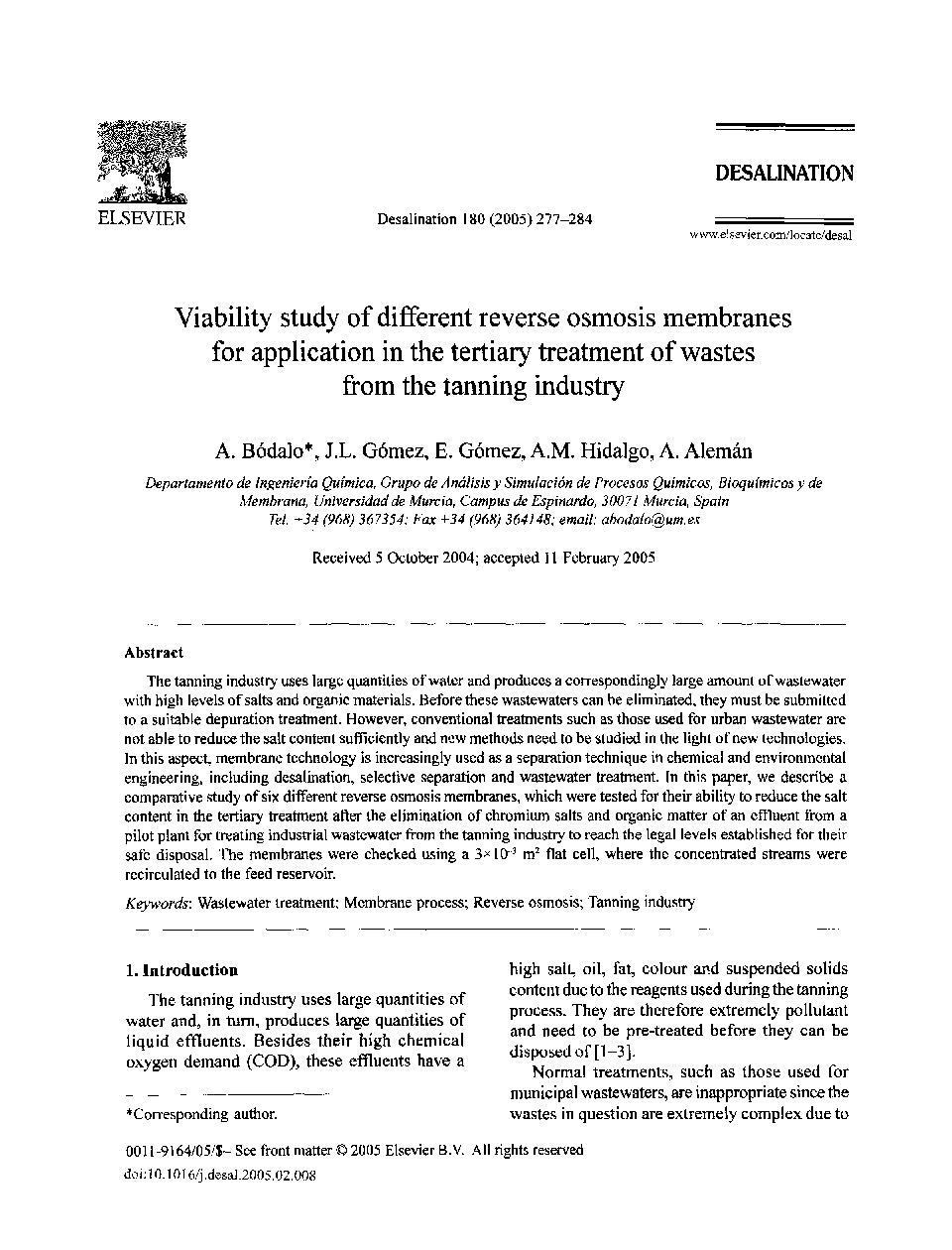| Article ID | Journal | Published Year | Pages | File Type |
|---|---|---|---|---|
| 9681078 | Desalination | 2005 | 8 Pages |
Abstract
The tanning industry uses large quantities of water and produces a correspondingly large amount of wastewater with high levels of salts and organic materials. Before these wastewaters can be eliminated, they must be submitted to a suitable depuration treatment. However, conventional treatments such as those used for urban wastewater are not able to reduce the salt content sufficiently and new methods need to be studied in the light of new technologies. In this aspect, membrane technology is increasingly used as a separation technique in chemical and environmental engineering, including desalination, selective separation and wastewater treatment. In this paper, we describe a comparative study of six different reverse osmosis membranes, which were tested for their ability to reduce the salt content in the tertiary treatment after the elimination of chromium salts and organic matter of an effluent from a pilot plant for treating industrial wastewater from the tanning industry to reach the legal levels established for their safe disposal. The membranes were checked using a 3Ã10â3 m2 flat cell, where the concentrated streams were recirculated to the feed reservoir.
Related Topics
Physical Sciences and Engineering
Chemical Engineering
Filtration and Separation
Authors
A. Bódalo, J.L. Gómez, E. Gómez, A.M. Hidalgo, A. Alemán,
